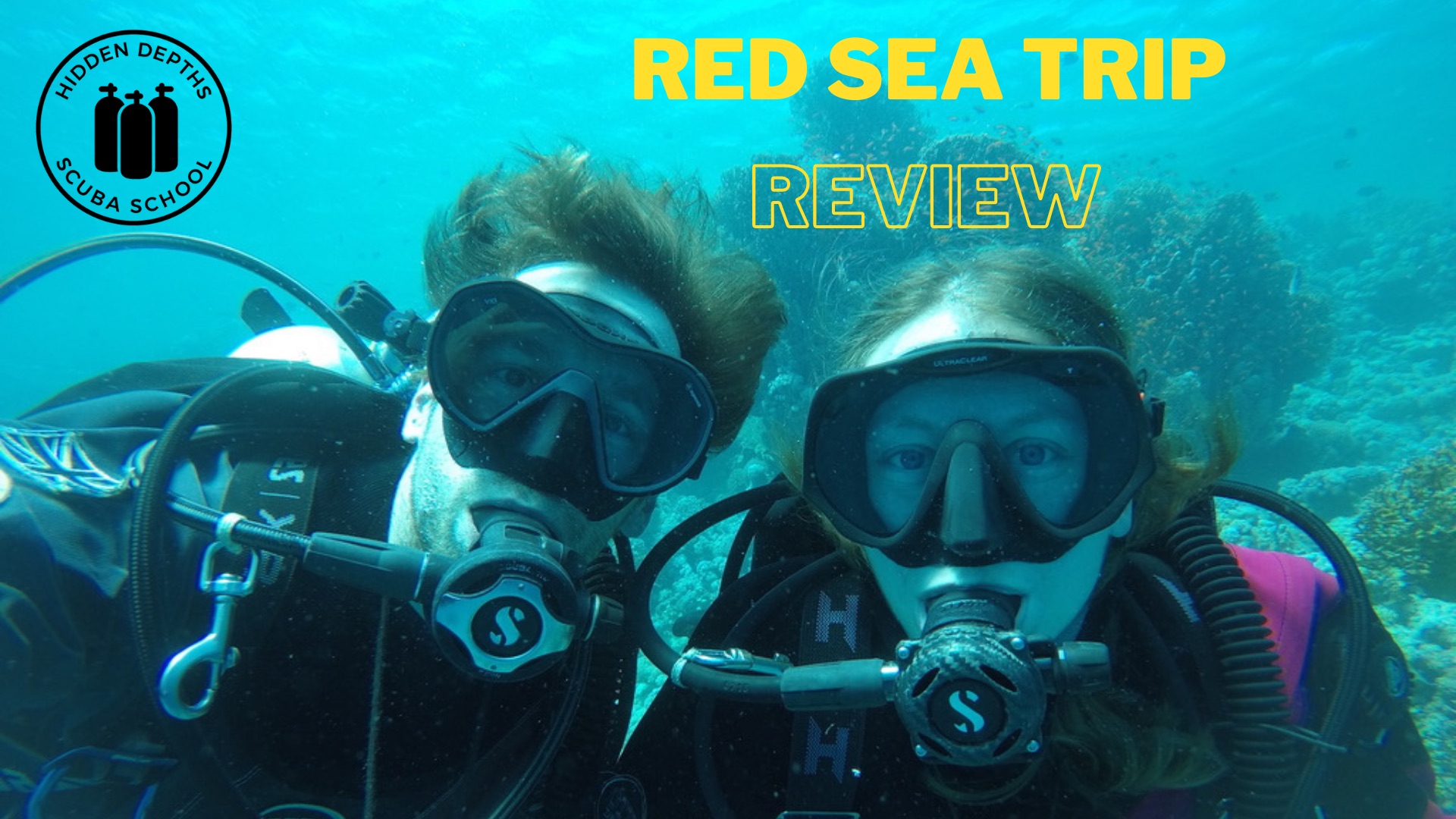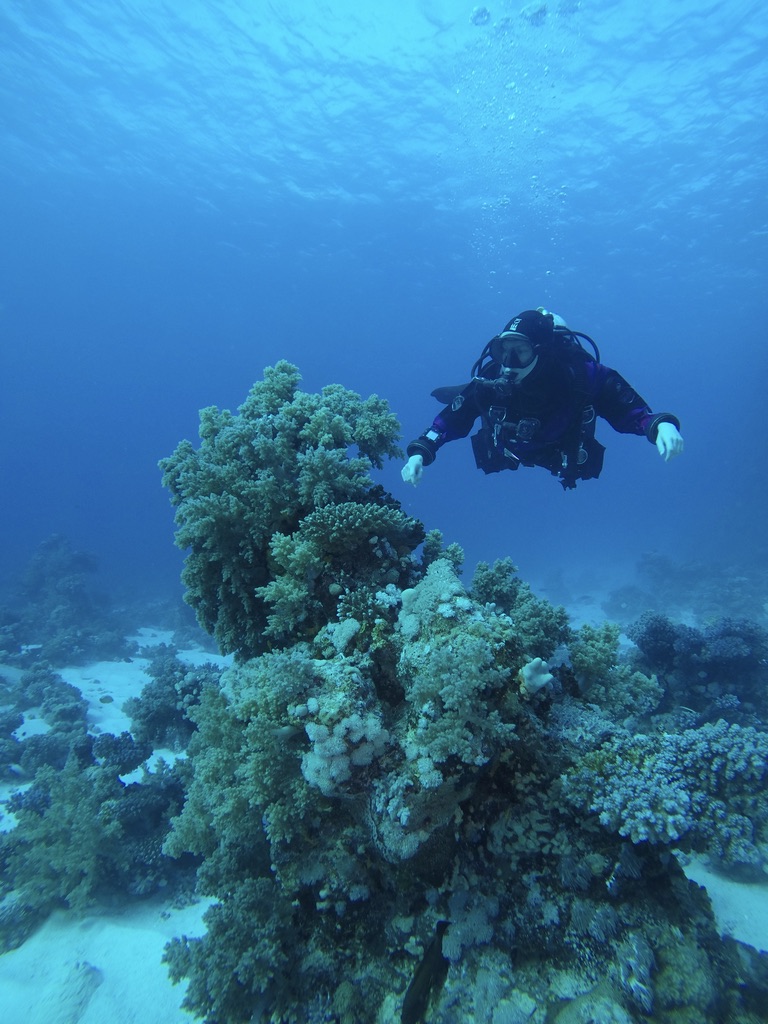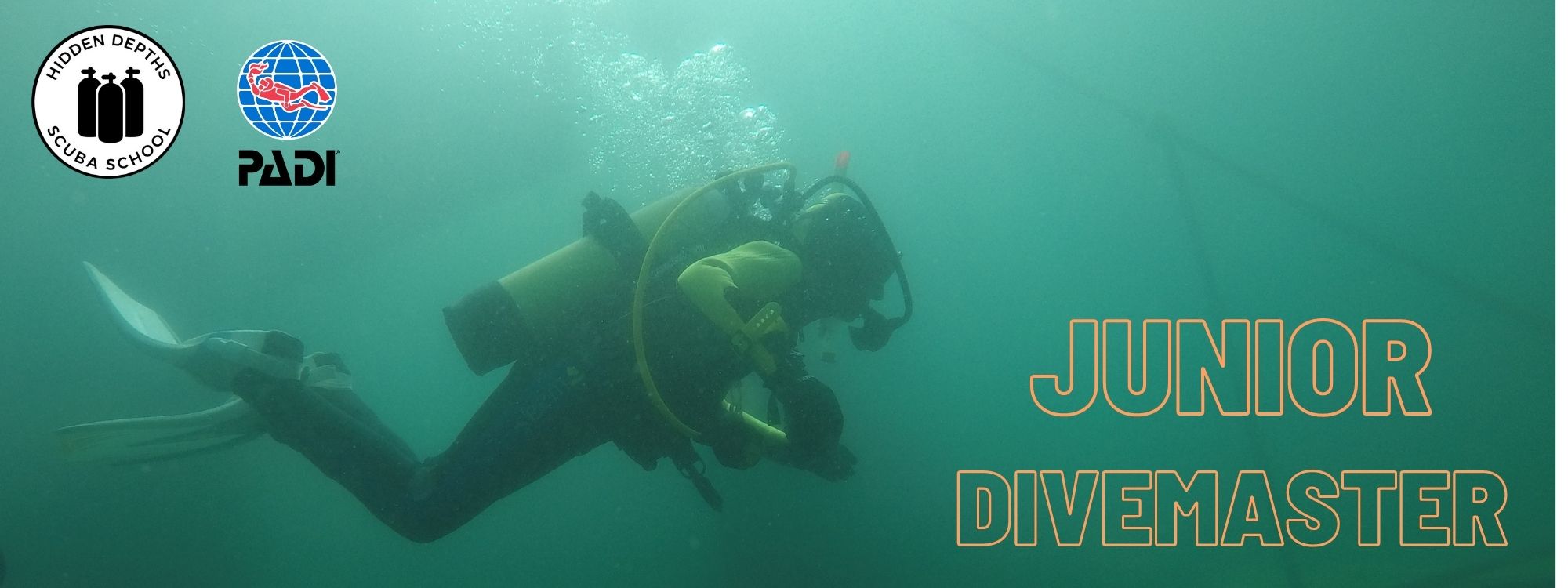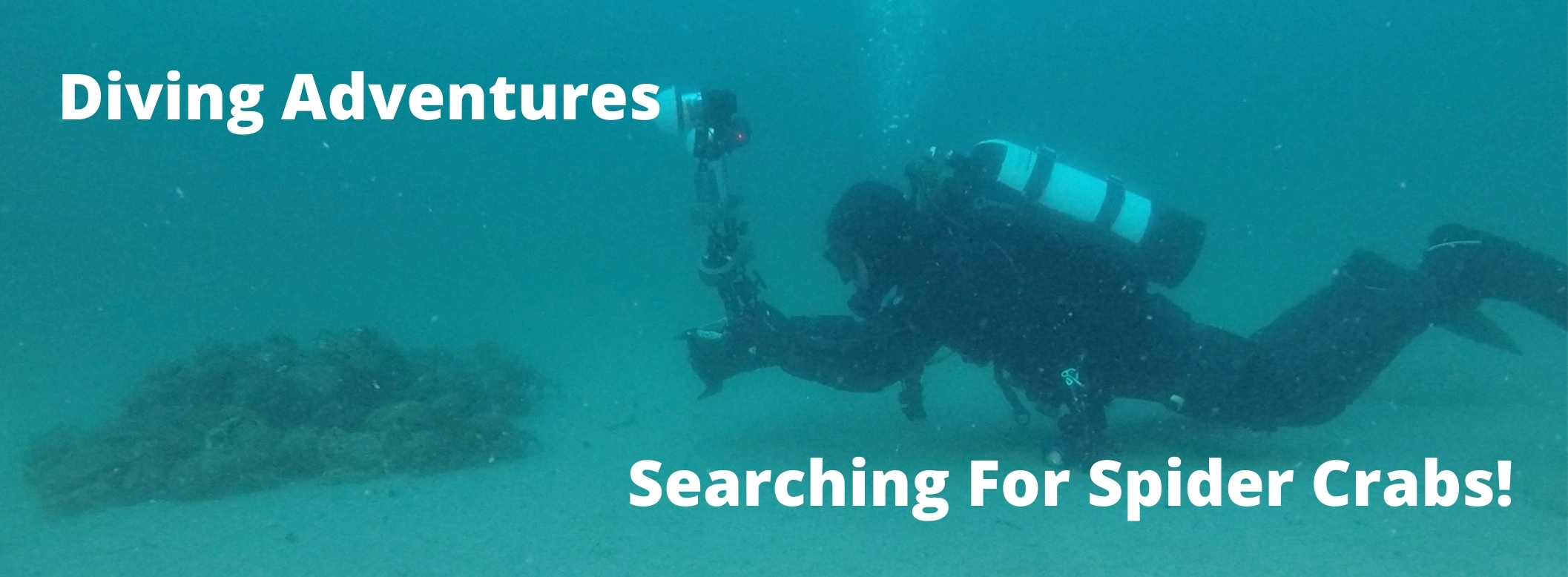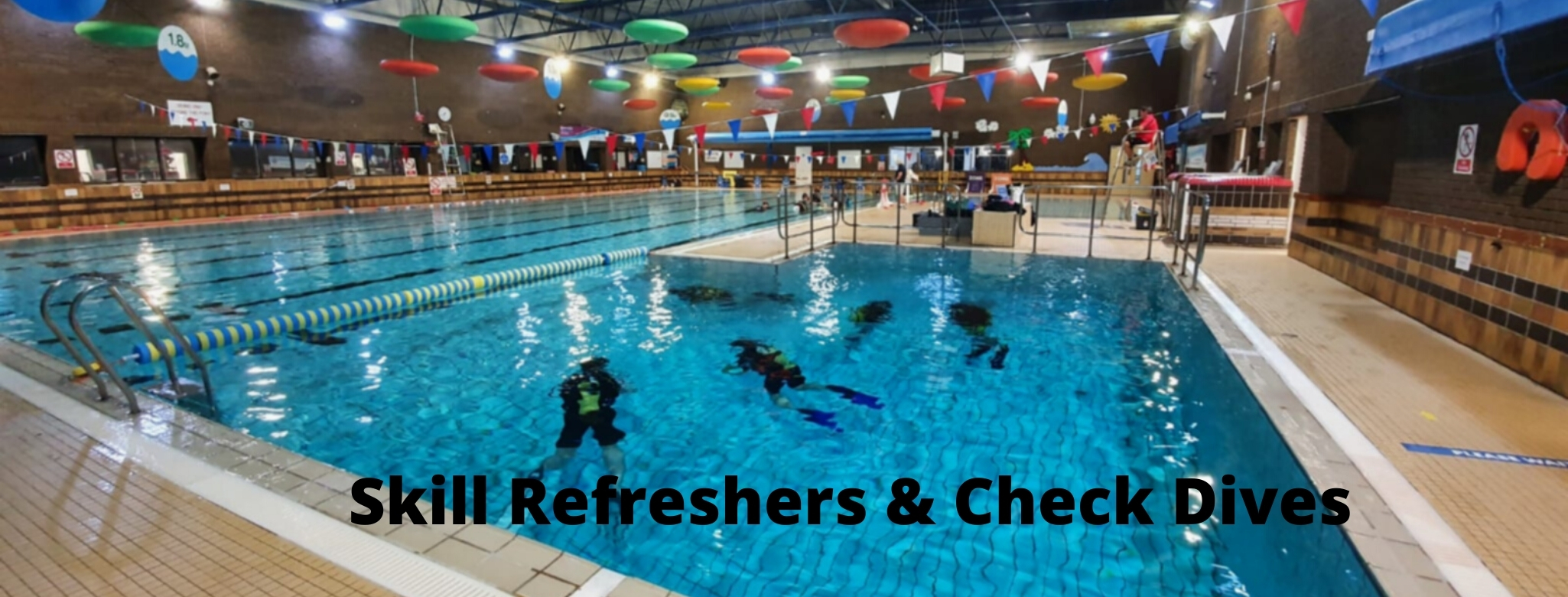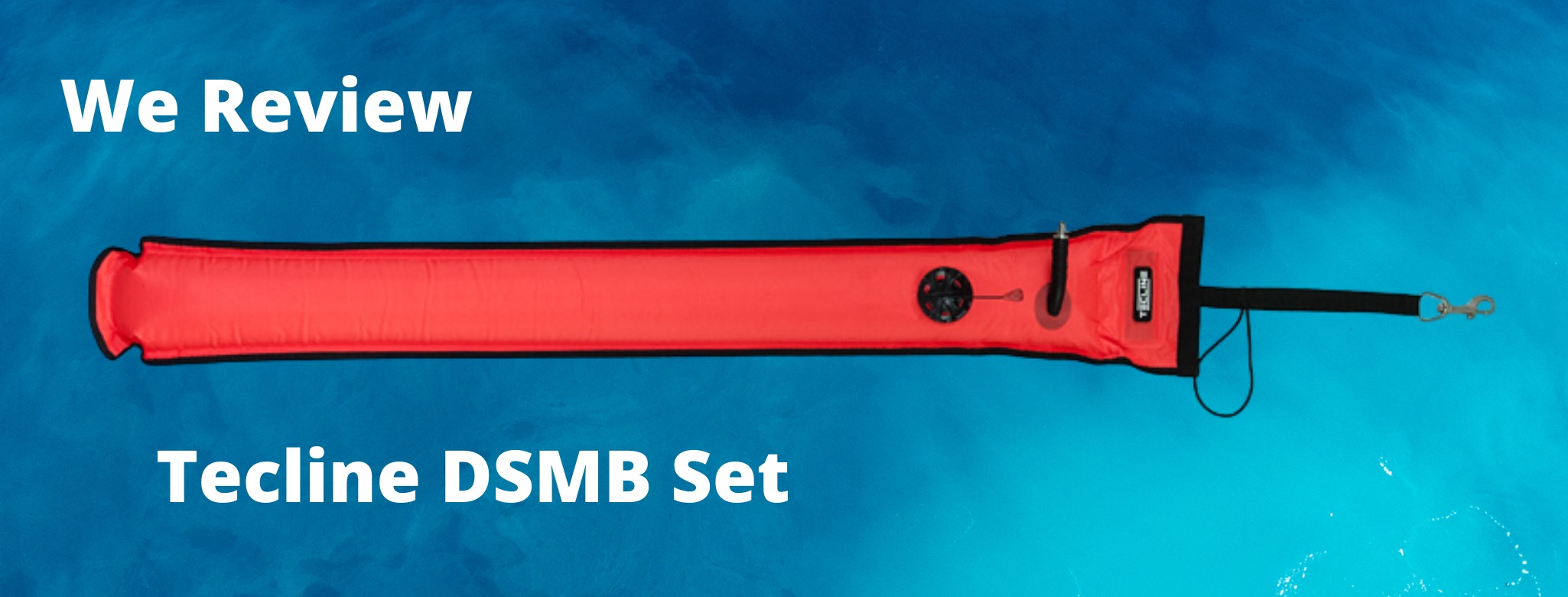You have 0 product(s) in your cart.
Deep South Liveaboard Trip Review
Hidden Depths Dive Club - Egypt Trip Review
On Friday 11th March, ten divers accompanied by one non-diver, met at Bristol Airport ready to hop on a plane to Hurghada, and eventually on to Port Ghalib for the start of our Deep South liveaboard trip. Having been almost three years since our last dive club trip abroad to the Maldives, there was a sense of relief that this trip was going ahead after the last two years of disruption to travel plans caused by the covid pandemic.
The flight, and subsequent transfer from the airport to our home for the week, Blue O Two’s M/Y Blue Adventurer vessel was fairly smooth. Once we arrived, there was time for a safety brief, a little paperwork and a chance to set up dive kit before dinner was served and it was time to get familiar with our cabins. So far, so good.
Day one began with a relaxed start, which was appreciated after our late arrival to the boat the previous night. Once all the Egyptian permissions had cleared we set off to sea, leaving the marina and soon the sea state became apparent to everyone on board. This took a few people by surprise, so there was a rush to source some sea sickness relief as the boat tackled the swell! The wind forecast for the week was looking quite challenging, which is fairly rare for the Red Sea even in the Spring.
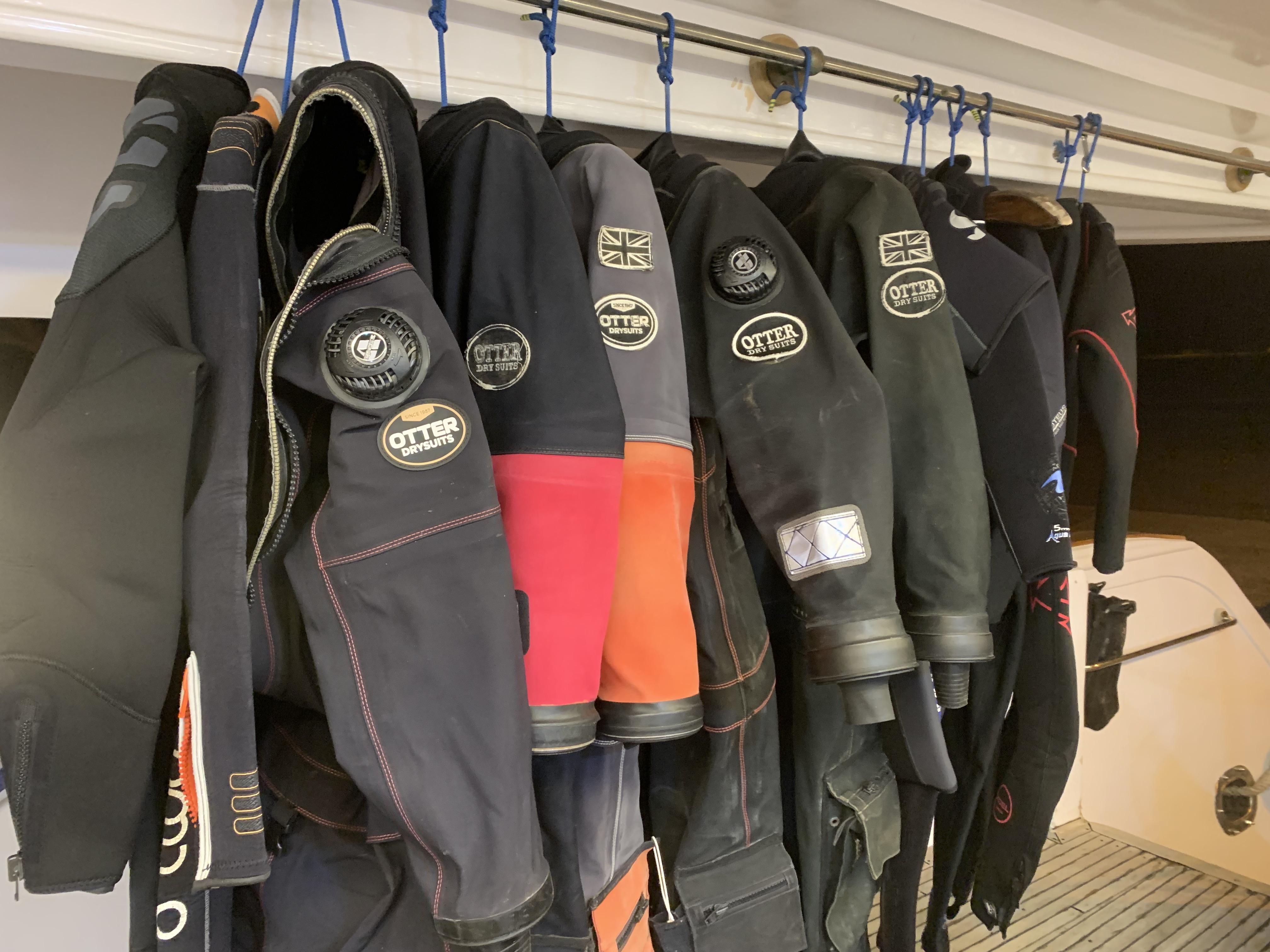 Once settled behind the reef that would form our check dive site Abu Dabab 3, the boat was much more stable and we were comfortably able to kit up and jump in for the check dive. Our group was split in our choice of exposure protection, with seven divers using their dry suits and the other three in layers of wetsuit. I’m sure it comes as no surprise to anyone reading this who knows me, that I’m one of those in a dry suit! The water temperature I recorded here was 22oc, but with the wind blowing briskly on the surface the real benefit to the dry suit was when we got out and didn’t have to quickly rush to try off!
Once settled behind the reef that would form our check dive site Abu Dabab 3, the boat was much more stable and we were comfortably able to kit up and jump in for the check dive. Our group was split in our choice of exposure protection, with seven divers using their dry suits and the other three in layers of wetsuit. I’m sure it comes as no surprise to anyone reading this who knows me, that I’m one of those in a dry suit! The water temperature I recorded here was 22oc, but with the wind blowing briskly on the surface the real benefit to the dry suit was when we got out and didn’t have to quickly rush to try off!
The check dive itself on the Abu Dabab 3 reef site was a lovely introduction to our Deep South week, which consists of primarily reef diving in the lesser dived areas of the Red Sea. We enjoyed excellent visibility, easily 20m or more, and were treated to a wide variety of hard and soft corals and accompanying reef fish. One highlight that made it into my log book from this dive was an exceptionally large trumpet fish, easily the biggest I’ve seen whilst diving.
Our second and final dive on day one was at the Sha’ab reef near Marsa Alam. This is a lovely reef with multiple swim-throughs, and you can spot the remains of a sunken diving liveaboard on the reef too. The wreck isn’t anything too exciting, although we spotted a crocodile fish resting on the wreck, but the real interest at this site is the reef and marine life. We found the first of many blue spotted stingrays here, as well as a large filefish enjoying a lunch of a passing jellyfish.
Overnight we made the long, and rather attritional, journey south to the St Johns area. The journey took most of the night, so getting any sleep in the rough sea conditions was difficult. That didn’t put anyone off when the early wake up call came though, and we were ready to jump in for our first dive in the Deep South! We began with two dives at Gotta Keber reef system, before moving on to the excitingly named Dangerous Reef for an afternoon dive and the first of our night dives.
I really enjoy night dives, so getting to dive Dangerous Reef both in the daylight and again at night was a real treat. The site consists of a stunning main reef, surrounded by small and medium sized pinnacles all covered in beautiful soft corals. During the daylight, the many moray eels were settled into their holes in the reef, but as soon as we jumped in at night we were able to watch these fascinating creatures free-swimming around the reef and hunting. In addition to the large eels swimming on the reef, our dive guides briefed us to look out for the feather stars and basket stars, which are best to see at night as they open up (but don’t shine your torch directly on them, as they quickly close in again in reaction to the light).
Day two turns out to be our only four dive day, due to the persistently windy weather limiting exactly where we can moor the boat. On day three we start with the Umm El Erouk reef at St Johns, before moving on to one of my favourite dives from the whole trip, St John’s Caves. At Umm El Erouk we enjoyed some huge pinnacles rising up almost to the surface from the sea bed at 20m below. As we have come to expect, the coral and fish life here is superb, including a large lion fish and more trumpet fish around the pinnacles.
Arriving at St John’s Caves, we were briefed to expect a maze of sea caves and caverns, expanding into the reef. The caves were shallow, I logged a maximum depth of 7m for this dive, and there was lots of light coming into the passages from multiple cracks and openings above us. Some passages were smaller than others, but we didn’t encounter anywhere two divers couldn’t pass side by side, and there was always an exit close by if you wanted to pop out into the main reef, despite the feel of being inside the reef. Collette and I spent almost our entire hour-long dive swimming around these cave passages, coming across a very small pipefish, as well as multiple blue spotted stingrays chilling out inside the caves. We also came across a large coral garden inside one of the larger passageways, that opened out into a bright and sandy area with some stunning coral formations. It might be a while before I’m back in the south of the Red Sea, but I’ll certainly be aiming to dive here again!
After leaving St Johns, we had a long travel time up to the Fury Shoal area. Once we arrived, the sun had just set, so we got to enjoy our first dive at Satayah in the dark. We explored the reef slowly, enjoying all the small life that can be spotted including shrimp, as well as a nice octopus moving around the reef in the dark. I was reminded of our more regular UK dive sightings, as we came across a large crab similar to the brown crab, however checking the ID book over dinner we realised we’ve seen a shy red crab. Satayah was also our morning dive the next day, where we swam further from our dive boat to explore the drop off at the edge of the reef, searching for passing sharks. Sadly we didn’t spot any, but we did see a large Napoleon wrasse cruising by.
At Fury Shoal the weather really limited our choice of sites, and we heard reports of disruption to boat movements all through the Red Sea. The excellent team on board did everything they could to keep us informed about the situation, and find us the site of Abu Galawa Kabir to dive, where we saw the first other dive boat all trip! The diving here was badly affected by the wind, with the visibility reduced to something closer to UK diving conditions, around 5m or so (although still much warmer!) During the dive, we swam to the wreckage of a small barge lying across the reef, which was already covered in a variety of hard coral despite sinking quite recently. We also completed our second and final dive of the day here.
 For our penultimate day of the trip, we visited Syul Island for the first dive. This isn’t a regular spot on the Deep South itinerary, however it’s a sheltered reef so we jumped in to check it out! We were rewarded with a turtle to begin with, and reports later of a shark sighting too, although I didn’t see it. After the dive we were taken across to the island by the zodiac boats so those who wanted to stretch their legs could do so. It’s a small sandy island, with low scrub bush in the centre. We saw a pair of ospreys on the island which was lovely, and spent our short time there collecting some of the many plastic bottles that had washed up. The zodiac drivers were happy to take the rubbish we had collected back to the boat to be recycled at the end of the week, and a few of us took the opportunity to swim back to the boat which was a nice way to end our time at Syul Island.
For our penultimate day of the trip, we visited Syul Island for the first dive. This isn’t a regular spot on the Deep South itinerary, however it’s a sheltered reef so we jumped in to check it out! We were rewarded with a turtle to begin with, and reports later of a shark sighting too, although I didn’t see it. After the dive we were taken across to the island by the zodiac boats so those who wanted to stretch their legs could do so. It’s a small sandy island, with low scrub bush in the centre. We saw a pair of ospreys on the island which was lovely, and spent our short time there collecting some of the many plastic bottles that had washed up. The zodiac drivers were happy to take the rubbish we had collected back to the boat to be recycled at the end of the week, and a few of us took the opportunity to swim back to the boat which was a nice way to end our time at Syul Island.
The final night dive of our trip took place later that day at Shalainate, where we were granted an extended dive time to compensate for the lack of diving we were able to complete earlier that day. Looking back through my log book from this dive, I recall seeing a large Spanish dancer, multiple pufferfish, a lovely blue trunkfish and more eels.
Our last night at sea included another long trip north, with the aim of a morning dive at Elphinstone reef. By this point in the week the weather was really wreaking havoc with the boat, which had started to let in some water and unfortunately this found it’s way into one of the bedrooms in the lower cabin area. The crew did everything they could to help the situation, but it was a sign that the boat was having a hard time dealing with the constant swell and wind.
Despite arriving at Elphinstone in the early hours of the morning, we didn’t wake up here as it was unsafe to moor. Instead our final day of diving began at Abu Dabab 6, another reef in the same area we dived during day one. During this dive we spotted a lovely white moray eel, as well as a free-swimming flat worm which was very cool to see.
 Our last dive of the trip was close to shore, at a site called Marsha Shona. We were told that we could focus our dive on the reef itself, or gamble on a swim across the sea grass bed in the lagoon in search of turtles, sea horses and dugongs. My buddy team wanted to take the latter option, so in we went and we swam straight out into the sea grass. The sea grass was only a few inches tall, so we fanned out into a long line to cover the largest area. We didn’t spot any sea horses or dugongs, but did get a memorable encounter with a large green turtle which was a real trip highlight. We ended our dive, and thus the trip, by ascending up the reef and back to the boat. One buddy pair who focused their dive around the reef told us it was one of the nicest of the whole trip, so this is certainly a site to visit again too.
Our last dive of the trip was close to shore, at a site called Marsha Shona. We were told that we could focus our dive on the reef itself, or gamble on a swim across the sea grass bed in the lagoon in search of turtles, sea horses and dugongs. My buddy team wanted to take the latter option, so in we went and we swam straight out into the sea grass. The sea grass was only a few inches tall, so we fanned out into a long line to cover the largest area. We didn’t spot any sea horses or dugongs, but did get a memorable encounter with a large green turtle which was a real trip highlight. We ended our dive, and thus the trip, by ascending up the reef and back to the boat. One buddy pair who focused their dive around the reef told us it was one of the nicest of the whole trip, so this is certainly a site to visit again too.
As the diving for the trip was done it was time to wash and dry kit, and make our way back to Port Ghalib. Now is a good time to comment on some of the other elements of the trip, such as the dive team and catering team. Hamo & Abdul, the dive team on board, were excellent throughout, and approached the weather situation with humour and understanding. I always felt comfortable in their decisions of dive site, and was confident that anywhere we were put into the water to dive, the crew would be able to safely get us back on board.
The catering team were also fantastic, keeping a hungry boat of divers fed with three good meals each day (plus a huge selection of snacks, milkshakes and cakes!) Providing such food from the small galley on board must be difficult in good sea conditions, but these guys had to contend with cooking in large swell, and still turned out lovely food (including vegetarian options for myself and Collette).
All that is left to wrap up is our journey back to Bristol. Travelling during covid has been troublesome and often burdened by a lot of paperwork to get anywhere. We were pleased to hear the news that the UK had stopped requiring a Passenger Locator form for reentry into the UK, so there was no lengthy paperwork to complete. I feel this is a good sign that travel is returning to the pre-pandemic situation we’re more familiar with.
To finish, I want to say a huge thank you to everyone on the trip for always keeping a positive attitude even when the worst of the weather was battering our floating home. It was a pleasure to travel and dive with everyone one of you, and I’m looking forward to our next journey away to Madagascar in September even more!
Thanks for reading, Greg
Trip Details
Dates - 11th to 18th March 2022
Company - Blue O Two, Deep South Itinerary
Vessel - M/Y Blue Adventurer
